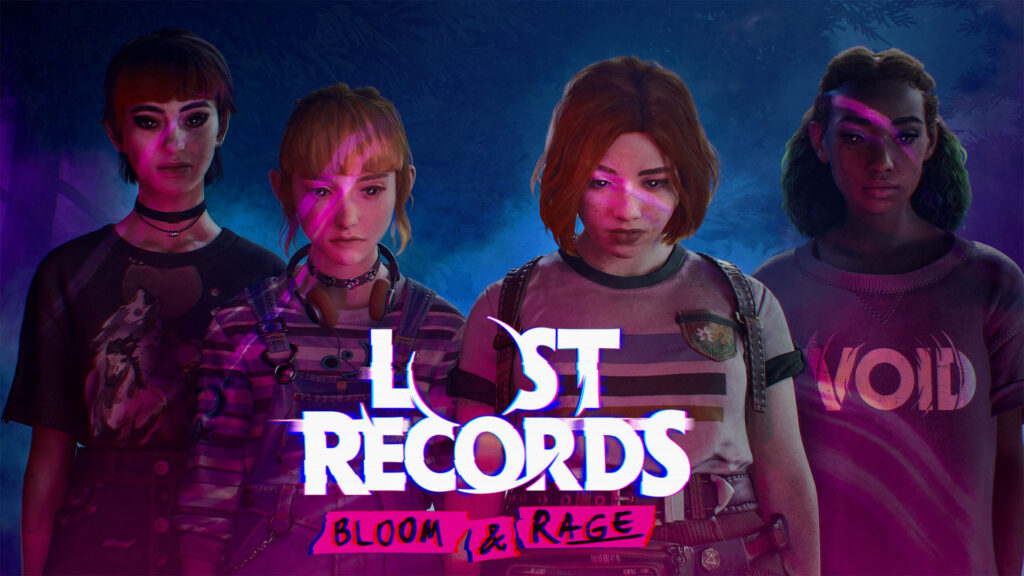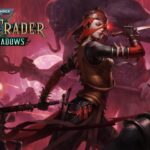Discussion on Unlocated Documents: Thrive & Wrath
Despite wrapping up the Life is Strange series, the team at DON’T NOD is not finished exploring the narrative genre they’ve helped shape. Currently, the Montreal studio is diligently working on Unseen Archives: Blossom & Anger, a game that vows to amplify everything witnessed in the developer’s past works with a multitude of central characters, dual timelines, and a mysterious plotline that grips players from the outset.
At Gamescom 2024, I had the opportunity to chat with Creative Director Michel Koch, Executive Producer Luc Baghadoust, and Producer Cathy Vincelli, delving into the game’s 90s backdrop, its primary influences, the dual timelines, and what the future might hold for the storyline. Enjoy.
The dialogue has been edited for clarity and conciseness.
Unseen Archives: Blossom & Anger presents two distinct timelines and an enigmatic incident that separates the quartet of comrades. While these aspects echo Stephen King’s It, were there other factors that shaped the setting?
Michel Koch: Various elements have subtly influenced the game. While we drew inspiration from It with the dual timelines, we steered clear of featuring a malevolent clown in our narrative. Other works by Stephen King have impacted the game, along with TV series such as Twin Peaks, for their use of supernatural elements that lurk around the storyline rather than dominating every episode. We admire how mystical and supernatural components can enhance the plot, adding chaos and intensifying the characters’ dilemmas. TV shows like Big Little Lies and Sharp Objects have also left their mark. The latter seamlessly weaves diverse timelines, much like our game. Games like Oxenfree and Nights in the Woods also played a role in shaping our group dynamics.
Cathy Vincelli: Twin Peaks was my primary muse for the dual timelines, alongside Yellow Jacket.
Luc Baghadoust: As Michel mentioned, we didn’t draw direct inspiration. We aimed to chart our path, drawing from the cultural tapestry of movies and music that inspired and influenced us in various ways.
Michel Koch: We immersed ourselves in 90s movies like E.T. and The Goonies to capture the essence, despite our characters being older than the kids in these films. We were captivated by the camaraderie displayed in these movies, showcasing a group of youngsters bonding together.
Consequently, is Unseen Archives: Blossom & Anger a tale of coming-of-age?
Michel Koch: Absolutely. This theme permeates most of our works, and we adore delving into such narratives. Adolescence marks the transition from childhood to adulthood, a pivotal phase where every decision shapes one’s future identity, a topic we are keen on exploring.
In contrast to the Life is Strange series, Unseen Archives: Blossom & Anger centers on group dynamics. How challenging was it to fabricate these dynamics, and what did they bring compared to your prior games?
Cathy Vincelli: Crafting the group dynamics wasn’t arduous for us. Each central character holds significance, and we strived to flesh out their personalities to elucidate the group’s synergy for players. These dynamics injected diversity into the game, with each character boasting a distinctive design, offering varied perspectives and engaging dialogue options.
Michel Koch: It was pivotal for us to present the group as a unified entity while ensuring robust individual development for each member. Swan is the pivotal figure in Unseen Archives: Blossom & Anger, yet we meticulously developed every character as if they could serve as the lead in their own game. Even when off-screen, their actions are conveyed through a timeline feature integrated into the game, a necessary element as the narrative unfolds over a single summer in the past, not encompassing every day from that period. This timeline facilitates discussions about off-screen events in dialogues, enhancing authenticity throughout the experience.
Revisiting Unseen Archives: Blossom & Anger unveiled multiple timelines. How do they transition? Do they entail distinctive gameplay elements?
Michel Koch: The timeline shifts align with the storyline’s demands. Players initially assume the role of Swann in the present, a 45-year-old woman reuniting with her forgotten friends at a bar. As she reconnects with her long-lost comrades, specific dialogue choices prompt players to transition between timelines. This switch isn’t governed by a systemic approach; rather, it unfolds organically through the reminiscing exchanges among friends rekindling lost ties after 23 years. It emulates a genuine reminiscing scenario, akin to catching up with a long-lost friend and recalling obscured memories. Regarding gameplay distinctions, the present timeline adopts a first-person viewpoint, contrasting with the third-person perspective of the past timeline. Swan’s return in the present as an isolated individual not aligned with a group steered our choice for divergent gameplay experiences.
The demo showcases numerous greyed-out conversational options, unlockable only after thorough exploration. How pivotal are these choices, and what nuances are overlooked with limited exploration?
Michel Koch: The game abounds with concealed elements, within the dialogue system and via the camcorder, to inject dynamism surpassing our prior endeavors. Players are encouraged to scour the surroundings, discover hidden facets, and share insights about the unearthed objects. Opting not to unlock these options is perfectly acceptable; however, it curtails interaction within the group. These features immerse players in the shoes of an individual striving to assimilate into a group of friends, offering the liberty to remain reticent, linger on the periphery, or actively partake in discussions.
You referenced the camcorder. How did this concept originate? How does editing footage influence the gameplay?
Cathy Vincelli: The camcorder duals as a narrative instrument and gameplay element, serving as Swan’s conduit to engage with her surroundings. As an introvert, she harnesses the camcorder to bridge the gap between herself and the external world. Objectives in the game hinge on filming specific elements, with hidden collectibles waiting to be unearthed through its lens. This feature intersects with dialogue options, rendering some objects imperceptible sans the camcorder.
Michel Koch: The footage editing facet leans more towards leisure. We anticipate players will relish showcasing their creativity, invoking them to share edited snippets online. We are elated with this feature, augmenting the experience without imposing mandatory tasks. Regardless of the player’s approach while recording, the gratification stems from witnessing the exact shot upon completing a sequence.
Luc Baghadoust: The addition of this feature enriches the gameplay without enforcing compulsory actions. Each player’s filming choices, when compiling a scene, culminate in fulfilling authenticity upon completing a sequence.
Mentioning collectibles, how numerous are they in the game?
Cathy Vincelli: While I can’t provide an exact count, players can anticipate an array of collectibles awaiting discovery. These finds offer deeper insights into Swan, at times unlocking voiceovers narrated by her, recounting how she captured a specific item. The collectibles interconnect with trophies and achievements, yet we believe the additional perspectives on Swan will serve as a compelling reward, even for those indifferent to chasing accolades.
Unseen Archives: Blossom & Anger is rolling out as two separate installments, with a succinct gap between their releases. Why is this so?
Luc Baghadoust: Episodic games might not appeal to everyone, yet we favor this release model as it cultivates anticipation and speculation among players awaiting subsequent episodes. The brief interlude between installments nurtures online discussions without alienating those who prefer a comprehensive gaming experience. This breather between episodes strikes a harmonious balance.
What lies ahead for Unseen Archives: Blossom & Anger? Expansion packs? Novel gaming ventures?
Michel Koch: We are exploring various prospects. Unseen Archives: Blossom & Anger constitutes an IP owned by DON’T NOD, affording us the creative liberty to ponder the broader scope of this universe and its characters. Much like Stephen King, with his interconnected literary works, we are contemplating a world-building approach, entwining standalone narratives within a cohesive framework. We harbor ideas on advancing the storyline, but our initial focus hinges on gauging the audience’s reception towards specific characters or settings, guiding our direction.
Thank you for your insights!
[source: https://wccftech.com/lost-records-bloom-rage-interview-discussing-the-setting-inspirations-multiple-timelines/]











